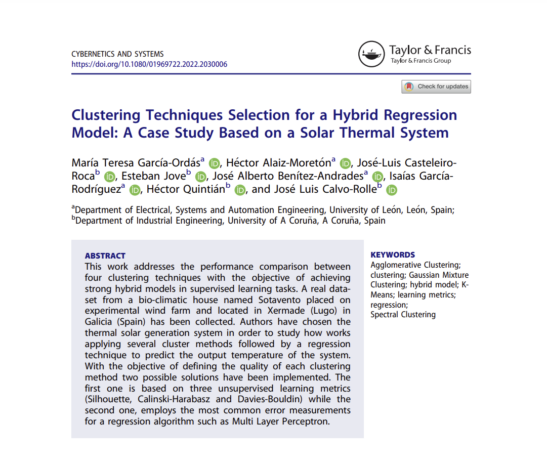Clustering Techniques Selection for a Hybrid Regression Model: A Case Study Based on a Solar Thermal System
Abstract
This work addresses the performance comparison between four clustering techniques with the objective of achieving strong hybrid models in supervised learning tasks. A real dataset from a bio-climatic house named Sotavento placed on experimental wind farm and located in Xermade (Lugo) in Galicia (Spain) has been collected. Authors have chosen the thermal solar generation system in order to study how works applying several cluster methods followed by a regression technique to predict the output temperature of the system. With the objective of defining the quality of each clustering method two possible solutions have been implemented. The first one is based on three unsupervised learning metrics (Silhouette, Calinski-Harabasz and Davies-Bouldin) while the second one, employs the most common error measurements for a regression algorithm such as Multi Layer Perceptron.
Keywords:
To cite this article:
-
María Teresa García-Ordás, Héctor Alaiz-Moretón, José-Luis Casteleiro-Roca, Esteban Jove, José Alberto Benítez-Andrades, Isaías García-Rodríguez, Héctor Quintián & José Luis Calvo-Rolle (2023) Clustering Techniques Selection for a Hybrid Regression Model: A Case Study Based on a Solar Thermal System, Cybernetics and Systems, 54:3, 286-305, DOI: 10.1080/01969722.2022.2030006

